The very first hydraulic excavator was used in 1897. Since then, hydraulic technology has greatly improved the efficiency of jobs for throughout numerous industries.
The mini excavator is very efficient for various kinds of work. Mini excavators can be a good source of income if you are able to harness its potential. In today’s article, we will take a look at different ways in which to put your compact excavator to use, and generate an income.
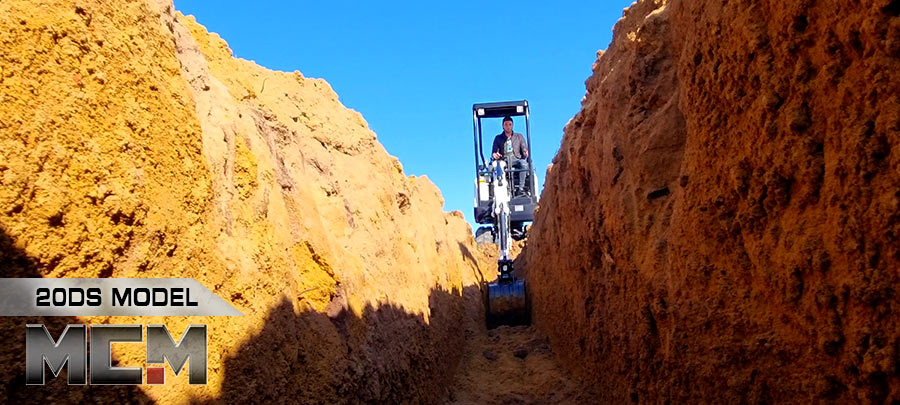
Trenching Work
- Sewer line digging for new lines, or for maintenance of existing lines.
- Fibre-optic cable installation.
- Plumbing pipe & irrigation line installation.
- Electrical cable installation.
- Raft foundations.
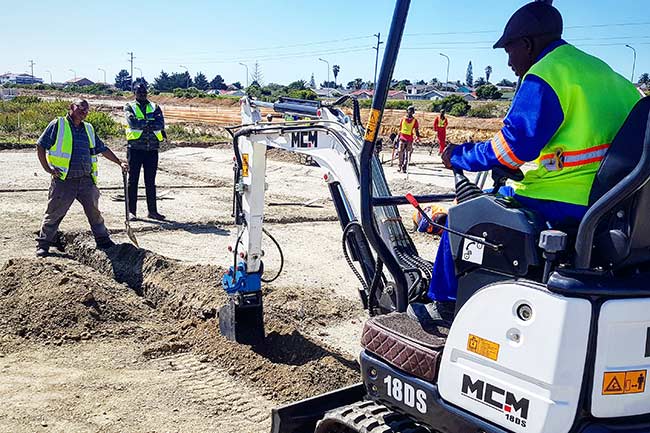
Demolition Work
You can use tools like stone cutters, grinders or jackhammers to break small pieces of concrete, but if you plan to break large pieces of concrete-like garden paths or retaining walls, you can rely on your mini excavator.
For this job, you will need a concrete breaker attachment, like a ripper or a pulverizer/hydraulic breaker attachment. A hydraulic breaker adds a lot of power to a compact excavator. It performs rapid pulverization by allowing the crush to flow through the breaker’s jaws.
The hydraulic breaker is made primarily for demolishing concrete structures. These attachments allow you to tear through driveways, old swimming pools, paths and old retaining walls, for easy loading and clearing and for reducing waste into smaller and more manageable chunks.
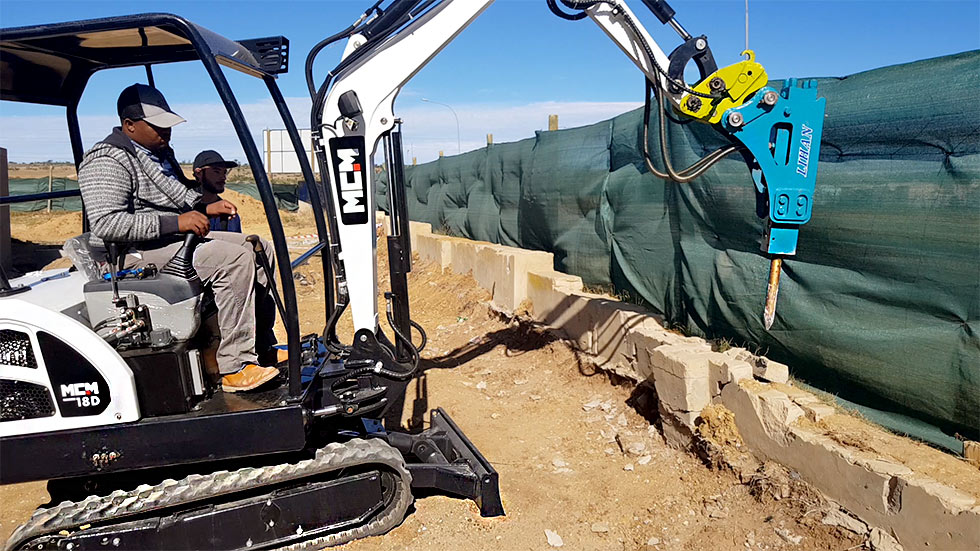
Compacting Soil
There are many pieces of efficient compaction equipment to choose from, such as tamping rollers, smooth rollers, pneumatic-tired rollers and vibrating rollers.
Alternatively, you can fit your excavator with a plate compactor attachment that is designed for compressing soil. You can also equip it with a packer wheel attachment to compact soil. These two attachments can compact soil much faster than hand-operated compaction equipment.

Building Retaining Walls
Mini excavators can be used to lay rocks, pavers, logs and other heavy materials for retaining walls.
Different attachments can break rocks into smaller pieces to fit the wall, and claw attachments can pick up and maneuverer logs. Once the wall is started, a grader or bucket attachment can backfill the soil against the wall.
If a retaining wall requires maintenance, use the attachments to deconstruct the wall down to the point that needs fixing. After the new piece is in place, you can use the excavator to rebuild the wall.
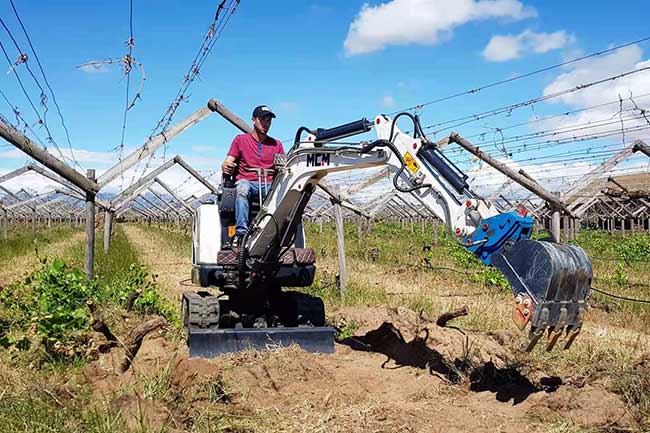
Fence Posts & Planting Trees
You can use your compact excavator for planting trees and erecting fence posts. If you want to install fence posts, poles or piers, you can equip the excavator with an auger attachment. With this attachment, you can use the compact excavator for precision digging.
One great advantage of using a compact excavator with an auger is its great reach. It can reach over shrubs, fences and holes, and it can position the auger accurately without disturbing the surrounding area or ground. Because of this reach, the compact excavator can tackle difficult jobs without driving on uneven ground.
The auger can dig holes with depths of around 900mm to 1200mm. It can also use bits as small as 150mm to as large as 600mm wide.
If you need to plant a lot of trees, like replanting a native vegetation area, the auger on a compact excavator will make the task much easier and faster.
Grading & Landscaping
Using your backfill blade will transform your compact excavator into a useful piece of grading equipment. You can use it to reshape terrain and bring your work area to the desired elevation and shape. You can also use it to smooth slopes and shape ditches. The mini excavator is the ideal equipment for landscaping jobs.
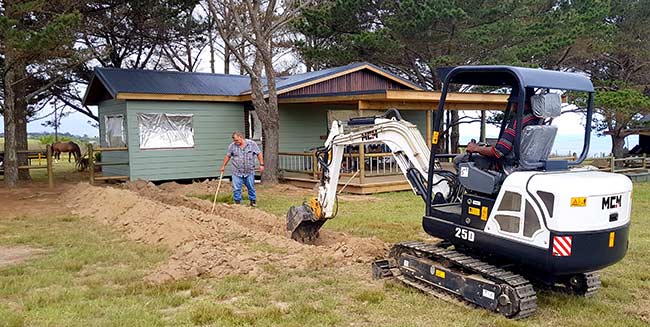
Build Paths & Trails
Another application for which you can use your mini excavator is in the development of trails.
If you intend, for example, to create biking or walking trails across a property, you can make use of the compact excavator. You can use its general-purpose bucket together with its grading blade to clear and contour trails.
You can use it to clear, grade and apply fill materials for prepping pathways as wide as 1500mm. The compact excavator can precisely lay out the trail, and it can also sculpt the path through hill and add or remove slopes.
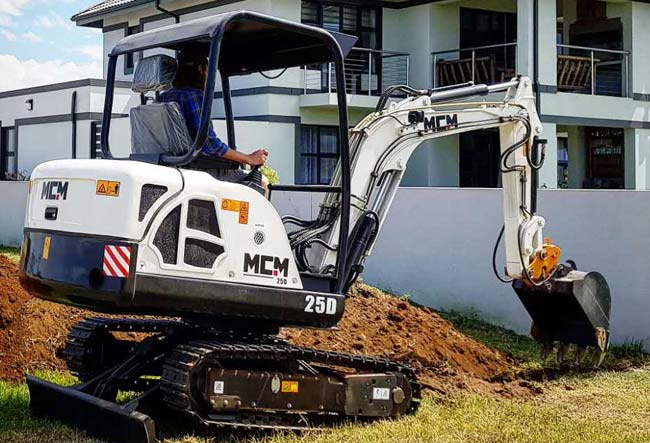
Mowing & Clearing
With a flail mower attachment, your compact excavator will excel in clearing brush and thick plant growth. It is also perfect for mowing large areas of grass, especially if on a slope, such as in a large drain or creek.
For speed and efficiency, you can use your compact excavator to remove trees and large shrubs. Equipped with a grab or bucket attachment, clearing becomes a breeze.
Grabs with clamps, three-tined grapples or midsize buckets equipped with teeth are best because these attachments enable the excavator to pull, grab or drag rooted undergrowth.
General Digging & Loading
It is common to see compact excavators loading materials and debris onto dump trucks, and you can add extendable arms to enhance its reach and attach clamps for efficiency.
Use a thumb attachment to remove debris like tree stumps, rocks and other items from an area because a thumb attachment allows the excavator to function like a giant clamp and move heavy loads.
A mini excavator can get a number of different digging jobs done such as swimming pool installations, grey water system installations, and any other digging application you can think of.

Final Thoughts
The integration of hydraulic technology and the improved coupler systems have enabled excavators to perform many different tasks. Compact excavators are no longer confined to the traditional roles of excavating and digging.
With the right attachments, the compact excavators can now perform jobs that you would not imagine it could do several years ago. We hope you enjoyed this article and found value in it. If you know of other ways in which to put a compact excavator to work, we’d like to hear from you.



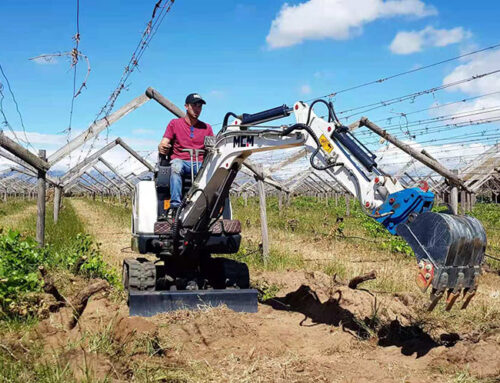
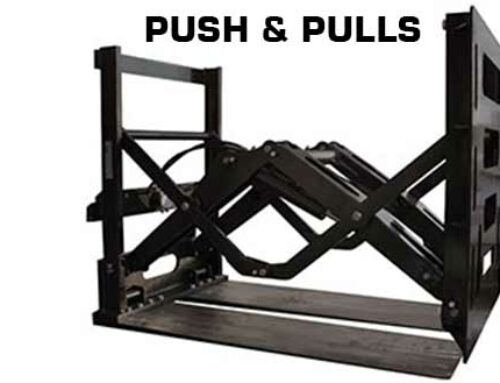
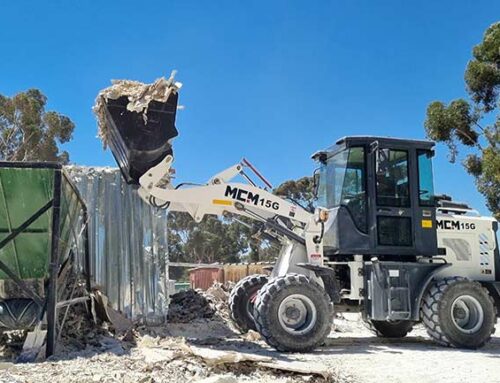
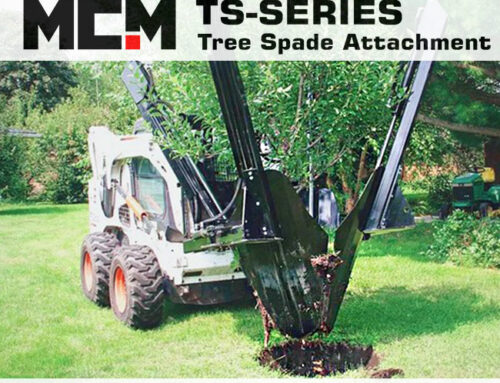
Leave A Comment